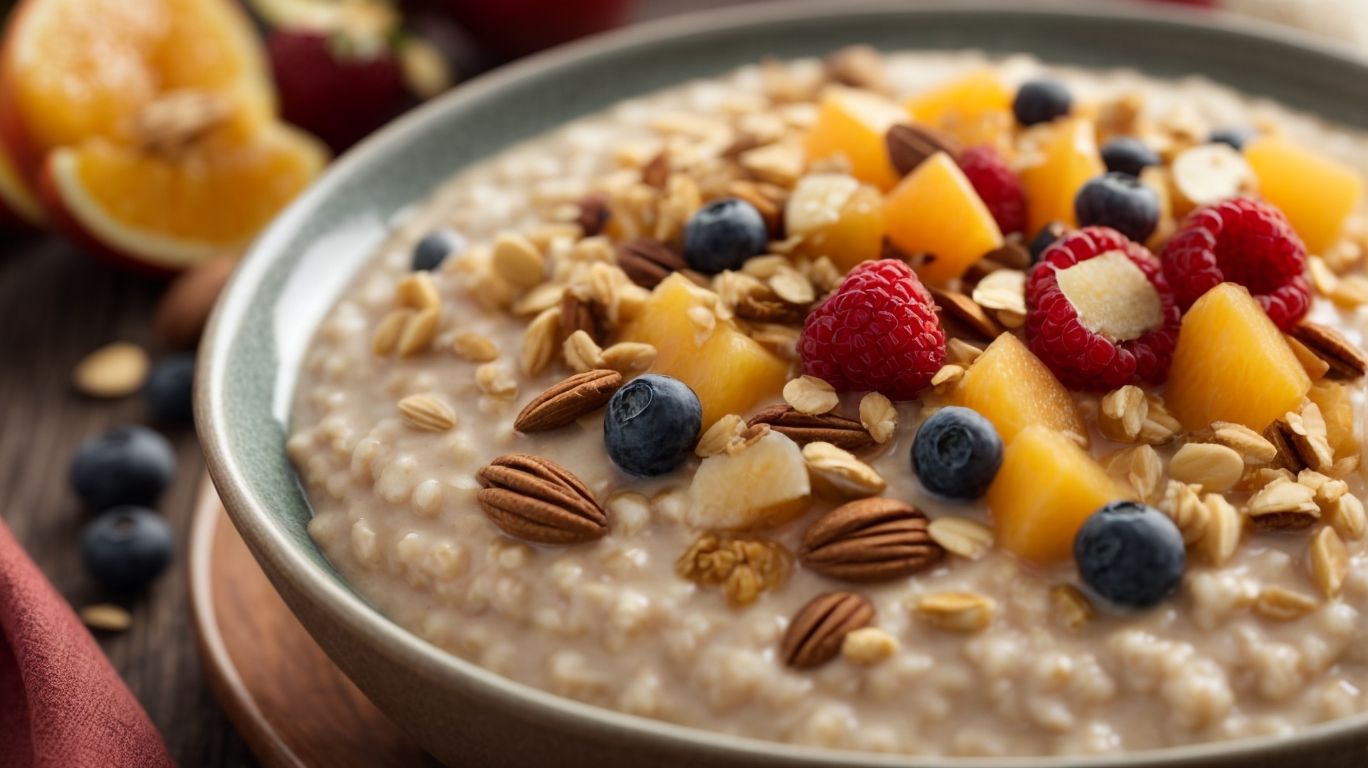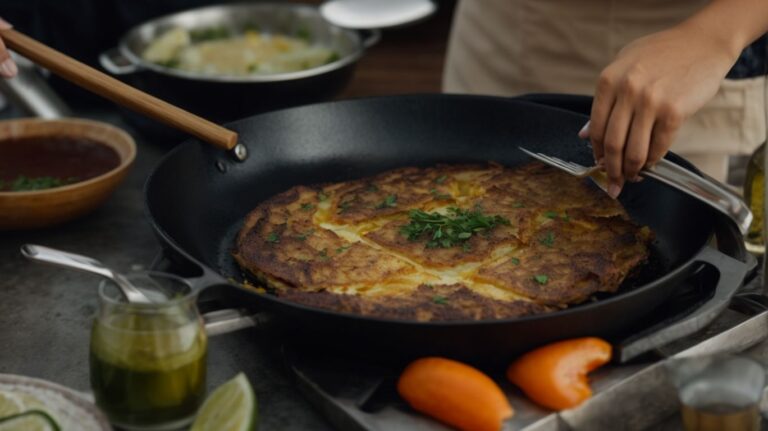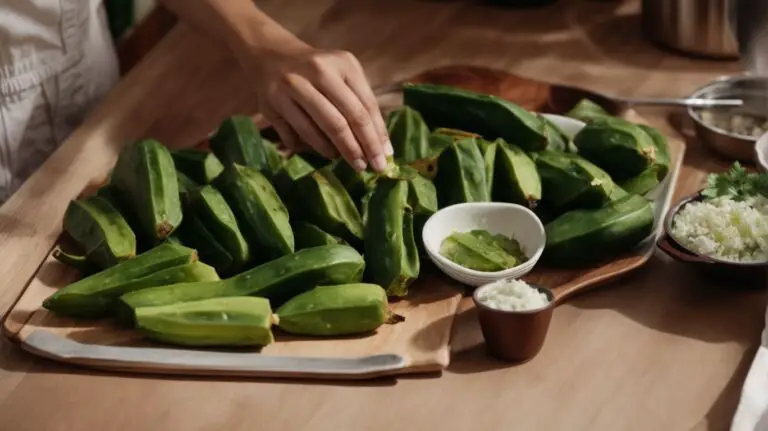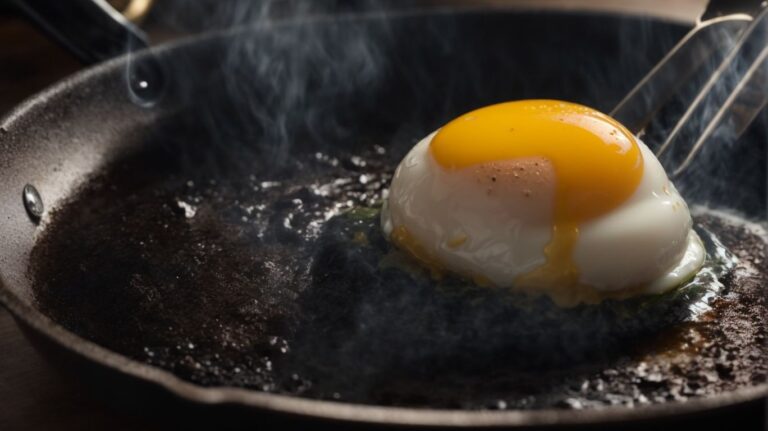How to Cook Oats Into Porridge?
Are you looking for a delicious and nutritious breakfast option? Look no further than oats!
In this article, we will explore what oats are, the different types available, and the numerous health benefits they offer.
We will also provide you with a step-by-step guide on how to cook oats into a creamy and satisfying porridge. Plus, we’ll share some tips to help you make the perfect bowl of oatmeal every time.
So, grab your oats and let’s get cooking!
Key Takeaways:
What are Oats?
Oats, a type of whole grain, are a versatile ingredient often used to make oatmeal, a popular breakfast choice.
Oats are rich in fiber, making them a nutritious option to kickstart your day. Their ability to keep you feeling full and satisfied for longer periods is one of the reasons why they are a staple breakfast food. Whether you prefer them in the form of a warm bowl of creamy oatmeal topped with fruits and nuts or as a hearty porridge drizzled with honey, oats offer endless possibilities for a delicious and wholesome start to your mornings.
Types of Oats
There are different types of oats available, including oat groats, rolled oats, quick-cooking oats, steel-cut oats, and Irish oatmeal, each with unique characteristics.
Oat groats are whole, minimally processed kernels with a nuttier flavor and chewy texture, making them ideal for hearty dishes like pilafs or risottos.
On the other hand, rolled oats, also known as old-fashioned oats, are oat groats that have been steamed and flattened, perfect for oatmeal, cookies, and granola recipes.
Steel-cut oats, with their coarse texture and longer cooking time, offer a chewy consistency, making them a popular choice for breakfast porridge with added toppings like fresh fruits and nuts.
Irish oatmeal, a type of steel-cut oats, hails from Ireland and is traditionally toasted to enhance its nutty flavor, commonly used in traditional Irish breakfasts.
When comparing the nutritional profiles, oat groats are the least processed and retain the highest amount of nutrients like fiber, protein, and essential minerals, followed by steel-cut oats. In contrast, rolled oats, including quick-cooking oats, are more processed and may have a slightly lower nutritional value, depending on the brand and added ingredients.
Health Benefits of Oats
Oats offer numerous health benefits, being rich in fiber, antioxidants, and protein, making them a nutritious choice for a balanced diet.
High in Fiber
Oats are known for being high in fiber, which is essential for digestive health and overall well-being.
Fiber in oats plays a crucial role in regulating digestion and maintaining a healthy gut. It not only helps in preventing constipation but also promotes a feeling of fullness, aiding in weight management. Whole oats and steel-cut oats are particularly rich in fiber, providing a slow-release energy source that keeps you feeling satisfied for longer periods. Fiber in oats can help lower cholesterol levels, reduce the risk of heart disease, and stabilize blood sugar levels. Including oats in your diet can be a simple yet effective way to boost your overall health and well-being.
Rich in Antioxidants
Oats contain a plethora of antioxidants that contribute to their health benefits, providing essential vitamins and minerals for overall wellness.
Oats, rich in a compound called avenanthramides, boast powerful antioxidant properties that help fight oxidative stress and inflammation in the body. These antioxidants play a crucial role in reducing the risk of chronic diseases, such as heart disease and diabetes.
Oats are a great source of various vitamins and minerals, including vitamin E, zinc, and iron, which are vital for maintaining healthy skin, supporting immune function, and aiding in oxygen transport throughout the body.
Good Source of Protein
Oats serve as a good plant-based source of protein, making them a valuable addition to vegetarian and vegan diets, particularly steel-cut oats.
What makes oats stand out in terms of their protein content is their amino acid profile, which provides essential building blocks for the body. The protein in oats is primarily made up of avenalin and globulin, which are key components for muscle growth and repair. Despite being a plant-based protein, oats offer a decent amount of protein per serving, satisfying the dietary needs of vegetarians and vegans.
Along with their protein content, oats are rich in other nutrients like fiber, iron, and magnesium, providing a well-rounded nutritional profile. This makes them not only suitable for those following a plant-based diet but also for anyone looking to enhance their overall health and well-being.
How to Cook Oats into Porridge?
Learning how to cook oats into a delicious porridge involves selecting the right oats, measuring ingredients correctly, cooking on the stove, and adding flavorful toppings.
When choosing oats for your porridge, opt for rolled oats for a creamier texture or steel-cut oats for a chewier consistency. Measure out the oats and liquid using a 1:2 ratio, such as one cup of oats to two cups of water or milk. Bring the liquid to a gentle boil in a saucepan before adding the oats, then lower the heat and let it simmer while stirring occasionally for about 5-10 minutes.
Step 1: Choosing the Right Oats
The first step in making a delicious oat porridge is selecting the right type of oats, such as oat groats or Irish oatmeal, to create a hearty and nutritious base.
When choosing oats for your porridge, opting for oat groats can provide a chewier texture and deeper flavor compared to rolled oats. Oat groats are minimally processed whole oats that retain all parts of the grain, offering maximum nutritional value.
On the other hand, Irish oatmeal is known for its creamy consistency when cooked, making it ideal for a smoother, silkier porridge experience. Its unique texture adds a touch of luxury to your breakfast bowl.
By selecting high-quality oats like oat groats or Irish oatmeal, you are not only enhancing the taste of your porridge but also ensuring that you benefit from the wholesome goodness and nutritional value of these premium grains.
Step 2: Measuring the Oats and Liquid
Accurately measuring oats and liquid, whether water or milk, is crucial for achieving the desired consistency and flavor in your oat porridge.
In terms of making oat porridge, the precise measurements of ingredients play a critical role in the final outcome. Whether you prefer a thick and creamy texture or a more runny consistency, the amount of oats and liquid you add can make all the difference. Water and milk are the two main liquids used in porridge, each contributing to the overall taste and texture. Water gives a more neutral base, while milk adds richness and creaminess to the dish.
Step 3: Cooking the Oats on the Stove
Cooking oats on the stove requires following specific instructions, adding spices and seasonings to enhance flavor and aroma in your porridge.
To begin, start by combining water, oats, and a pinch of salt in a saucepan over medium heat. Allow the mixture to come to a gentle boil while stirring occasionally. Once the oats have softened and absorbed most of the water, you can begin incorporating your favorite spices and seasonings for that extra depth of flavor. Common choices include cinnamon, nutmeg, vanilla extract, and a touch of honey for sweetness.
For a savory twist, experiment with savory seasonings like turmeric, cumin, paprika, or even a dash of soy sauce. These additions can transform your oatmeal into a delicious and unique dish that awakens your taste buds.
Step 4: Adding Flavors and Toppings
Enhance the taste and presentation of your oat porridge by adding a variety of flavors, toppings, and garnishes like fruits, nuts, or honey for a delightful breakfast experience.
When exploring flavor combinations, consider mixing in seasonal fruits like berries, bananas, or sliced apples to add a burst of freshness and natural sweetness to your porridge. Nuts such as almonds, walnuts, or pecans not only provide a satisfying crunch but also offer a dose of healthy fats and protein. Honey, with its natural sweetness and rich flavor, can elevate the overall taste of your oat porridge while also providing numerous health benefits.
- Experiment with a dash of cinnamon or nutmeg for a warm and cozy spice infusion.
- Sprinkle chia seeds or flaxseeds for added texture and a boost of omega-3 fatty acids.
- Drizzle a touch of maple syrup for a decadent yet natural sweet flavor.
Tips for Making the Perfect Oatmeal
To create the perfect oatmeal, ensure the right oat-to-liquid ratio, avoid overcooking, and customize with a variety of flavors and toppings.
In terms of the oat-to-liquid ratio, a general rule of thumb is 1:2, one part oats to two parts liquid, whether it’s water or milk, for a creamy texture. Cooking time is crucial, and it’s best not to walk away from your oats; a simmer for about 10-15 minutes should do the trick. Experimentation is key when it comes to customization – from adding fruits, nuts, seeds, or sweeteners like honey or maple syrup, to incorporating spices like cinnamon or nutmeg for a flavorful twist.
Use the Right Ratio of Oats to Liquid
Achieving the perfect oatmeal consistency relies on using the correct ratio of oats to liquid, whether water or milk, to create a creamy and delicious texture.
This ratio plays a crucial role in determining whether your oatmeal turns out thick and hearty or thin and watery. A common guideline is typically a 1:2 ratio of oats to liquid, but tweaking this can personalize your dish to your liking. Opting for a higher ratio of liquid can result in a smoother, more fluid consistency, while reducing the liquid amount will yield a thicker, heartier meal. Experimenting with different ratios until you find the perfect balance is key to achieving your desired oatmeal texture.
Don’t Overcook the Oats
Avoid overcooking your oatmeal to prevent a gluey mess and consider making oatmeal in small batches to avoid leftovers that may lose their texture.
In terms of cooking oatmeal, timing is key. The ideal cooking time can vary depending on the type of oats you use, but generally, most oats require around 5-10 minutes to cook to perfection. Be sure to stir your oatmeal occasionally to prevent it from sticking to the bottom of the pot.
To enhance the flavor of your oatmeal, try adding a pinch of salt or a splash of honey while cooking. These simple additions can elevate the taste profile of your dish without the need for excessive sugar or sweeteners.
Batch cooking oatmeal is a great time-saving strategy. You can prepare a larger batch at once and portion it out for convenient breakfasts throughout the week. Simply store the extra servings in airtight containers in the fridge and reheat them in the microwave when ready to eat.
Experiment with Different Flavors and Toppings
Get creative with your oatmeal by experimenting with an array of flavors and toppings such as honey, nuts, fruits, or spices, to enhance both taste and nutritional value.
Switch up your breakfast routine by trying out a luxurious honey drizzle or a sprinkle of crunchy nuts. For a burst of freshness, add a handful of colorful fruits like berries or sliced bananas to your bowl. If you crave a bit of warmth and depth, a dash of cinnamon or nutmeg can elevate your oatmeal to a whole new level. The possibilities are endless when it comes to flavor experimentation with oatmeal, so don’t be afraid to mix and match to discover your perfect combination.
Conclusion
Oatmeal stands out as a versatile and nutritious breakfast option, offering a delicious and satisfying meal choice for any time of the day.
One of the key benefits of incorporating oatmeal into your daily diet is its ability to provide a hearty and wholesome meal that keeps you full and energized. Whether topped with fresh fruits, nuts, or a drizzle of honey, oatmeal can be customized to suit individual taste preferences, making it a popular choice for breakfast enthusiasts. Oatmeal is a great source of fiber, essential vitamins, and minerals, contributing to improved digestion and overall well-being.
Oatmeal is a Versatile and Nutritious Breakfast Option
Oatmeal is a versatile and nutritious breakfast choice that can be customized with various toppings, stored as leftovers in the fridge for a quick meal, or prepared in batch for convenient consumption.
Oatmeal stands out as a blank canvas for flavor exploration, allowing you to add fruits, nuts, seeds, honey, or spices to create a personalized morning delight. When storing leftover oatmeal, ensure it is cooled completely before transferring to an airtight container and refrigerating. Batch cooking oatmeal at the start of the week saves time, with options to portion it out for individual servings or mix it up with different toppings daily.
Frequently Asked Questions
How to Cook Oats Into Porridge?
What type of oats should I use to make porridge?
You can use any type of oats, but rolled or steel-cut oats work best for porridge.
What is the ratio of oats to liquid for making porridge?
The general rule is 1 cup of oats to 2 cups of liquid, but you can adjust it based on your desired consistency.
Can I make porridge in advance and reheat it later?
Yes, you can make a large batch of porridge and store it in the fridge for up to 3 days. Just add a splash of liquid when reheating to bring back the creamy consistency.
Tips for Making Perfect Porridge
How do I prevent my porridge from becoming lumpy?
To avoid lumps, make sure to stir your porridge constantly while cooking and gradually add the oats to the liquid, not all at once.
What are some tasty toppings for porridge?
Some popular toppings for porridge include fresh fruits, nuts, honey, and nut butter. Get creative and try different combinations to find your favorite.
Can I use alternative milks, like almond or coconut milk, to make porridge?
Absolutely! Using alternative milks can add different flavors to your porridge, just make sure to adjust the amount of liquid used accordingly.






